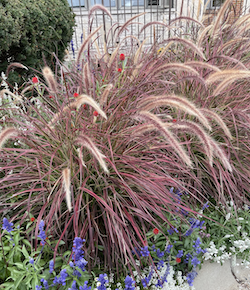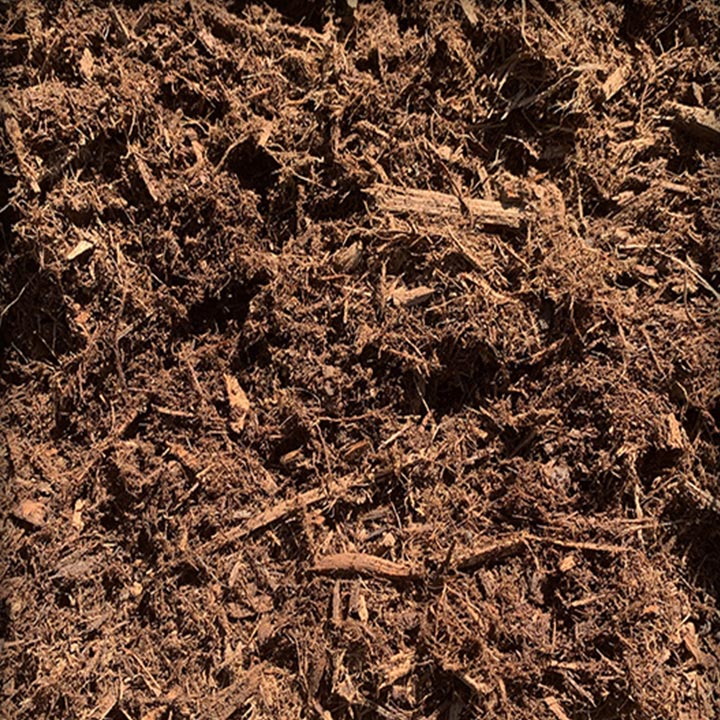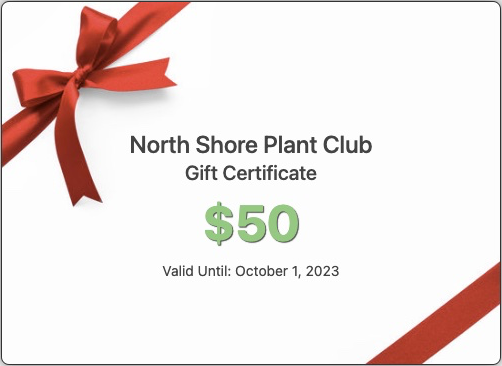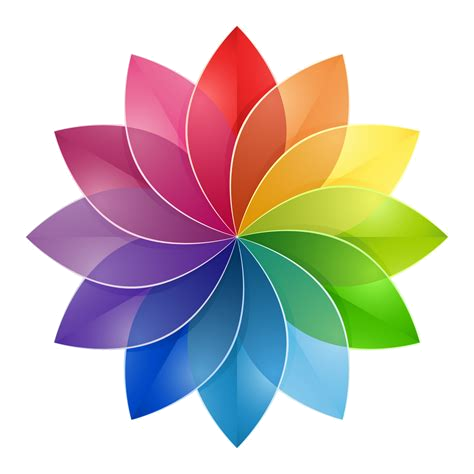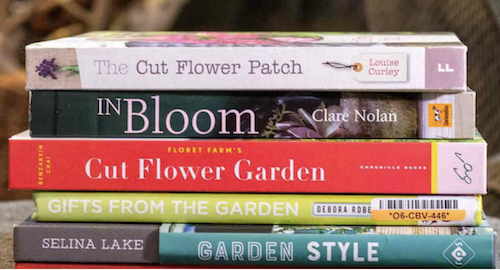Ever wish it were cheaper and easier to get great plants for your yard?
Us, too! It's our mission to help people enjoy becoming gardeners by making gardening easier and more affordable: the biggest variety of plants at prices anyone can afford, within 5 minutes of your house wherever you live.
Our Garden Club of America-commended plant buyers' club will help you get the plants and mulch you want -- from the same sources the pros use -- at almost wholesale prices, without spending hours going from store to store!
How Does The Plant Club Work?
Several times a month during the spring and summer, the Plant Club will collectively make an order from a rotating list of hand-selected wholesale nurseries, providing access to pretty much every type and size of plants. Look at the photos and information on this website and if you want something, let us know. We'll order everything from the grower(s), get the plants and bring them to one of 15 local Chicagoland pickup sites or deliver to your home ($20 for any number of plants we can bring you without special equiment) by the following weekend... You choose!
In comparison to the 100%+ mark-up over wholesale typical at most area nurseries, Plant Club prices pretty much cover our costs... so you don't need to feel bad about ordering as much as you want, trying something new, giving extras to friends -- whatever makes you tick!
We've got everything you might need for your yard: annuals or perennials; small plants in flats or
mature plants in big containers; Hanging baskets or patio pots for your porch.
Long-time stand-bys, Illinois Natives, current favorites, and new introductions; plants for solving those problem areas in your yard, or helping you achieve goals for your yard.
Even deliveries of mulch, compost or dirt.
We're also always trying to find new plants we haven't had before... Here's what's new this week! Plus, we've compiled some resources to help you dream bigger: photos of inspirational landscapes, planters and hanging baskets; a plant color wheel; and a calendar of local plant events. And because the best plants are the ones that specifically work for the situation in your yard, we have a multi-criteria plant search and elevator pitches for (and against) our most popular species of perennials.
We're Not for Everybody
If you need a plant fix right this minute, or you want to look at, smell, and touch the plants before you buy, go to your awesome local retail nursery. We love them!
But if you want the same pro-quality plants (as well as more varieties of those plants in more sizes, for whatever project you're working on) at great prices, ordered online at your convenience, arriving in your neighborhood a few days later, The Plant Club may be for you!
Enjoy These Late Summer Perennials!
Lots of plants bloom themselves out in a frenzy during May and June, but here are some of our favorite late summer pernennials... plants which look their very best in August or September.

|
|
This beautiful, dainty plant is commonly called Windflower for the way her flowers tend to bob and dance in the breeze. Anemones come in a wide variety of sizes and bloom in a wide range of colors with contrasting centers (some varieties in spring; others in fall). Anemone’s blooms hover on thin stems over her neatly-mounded leaves, giving her the delicate air of a well-dressed aristocrat.
Anemone prefers partial shade and well-drained soil, but isn’t overly picky and is quite easy to grow. She spreads easily, so choose your plant’s home wisely and she’ll reward you with a happily-dancing carpet of gorgeous blooms.
Reasons to want this plant:
Deer and rabbit resistant
Thrive in partial shade
Make beautiful cut flowers
Attract pollinators
|
| |

|
|
Asters are wonderful additions to a fall garden, with daisy-like flowers that bloom reliably in late-summer and early-fall. They come in a wide variety of colors and sizes -- pick from white, pastel blues and pinks, and even purple and scarlet. Best of all, they are easy to grow and will be predictable in the way they bloom for you. Overall, Asters are a very agreeable plant and one that makes a lot of sense to bring to your garden party.
Reasons to want this plant:
Deer resistant
Attract pollinators due to their bright colors.
Disease resistant
|
| |

|
|
If August had a spokesplant, Black-Eyed Susan would be it. Hardy green mounds of foliage are crowned with domes of striking yellow rays surrounding contrasting black centers. Just looking at a warm golden sea of these flowers feels like sunbathing for your soul.
Rudbeckia is as hardy as she is pretty, and this plant can grow quite large in the right spot. She prefers full sun but will tolerate partial shade, can survive all but the driest of droughts, and attracts pollinators like crazy with her highly-contrasted blooms.
Black-Eyed Susan does not like to get her toes wet and is prone to powdery mildew in areas with low air circulation, so drier conditions are better for this beauty.
Reasons to want this plant:
Attracts pollinators
Thrives in full sun to part shade
Drought-resistant
|
| |

|
|
This statement plant is named for its tough stem and persistence to survive. She makes a great addition to a fall garden with her fantastic height. Intensely purple flowers, add a prominent focal point and also attract butterflies and bees. The best thing about Ironweed is its flexibility -- while it grows naturally in moist conditions (even where it sometimes floods), it can handle regular soil as well. Want the same great pollinator attraction and mass of flowers but not the height? Plant the shorter varieties for the same WOW!
Reasons to want this plant:
Deer and rabbit resistant
Attracts pollinators
Thrives in full sun
|
| |

|
|
This diversified group of plants has one thing in common: all sedums are succulents, meaning they store water in their leaves. This gives their colorful foliage a plump, shiny look that provides a unique contrast in the garden, in planters, or along stone walls and walkways. The genus can be loosely split into three groups: upright Border Sedums, low-growing Creeping, and Trailing Sedums.
There’s a moment in the garden when most plants have died back and things start to look a bit bleak, usually right around Halloween. This is Border Sedum’s finest hour. These Sedums begin blooming in August and certainly hold their own during the peak of any late-summer garden, but these plants can withstand very cold temps and look good doing it, which makes them an amazing addition on those dark November days. Border Sedum’s deep purple, emerald green, warm gold, and even hot pink foliage is truly stunning before, during, and after these plants bloom.
Low-growing Creeping and Trailing varieties of Sedums come in a huge array of shapes, sizes, and growing habits; some spread slowly, some are quite invasive, and some fit cozily into any little nook or crevice they can find and stay there quite happily. Most low-growing sedums do bloom, though some varieties have relatively muted blooms and are better known for their striking leaf shapes, colors, and designs. These Sedums are little gems scattered about the garden - rich jewel-toned gifts in surprising, geometric patterns.
Reasons to want this plant:
Late season color
Unique shapes provide high contrast
Huge variety
Drought-tolerant (they store water in their leaves!)
Low maintenance
|

|
|
Grasses are a great addition to a garden, especially as they are four-season elements. Consider using them instead of evergreens in places where you want a more interesting texture. There are many varieties of grasses: the arching forms provide a delicate, graceful element and the more upright grasses can provide a more bold statement.
One favorite small grass -- and truly an evergreen one -- is Blue Fescue. It has chalky blue blades, and does best in full sun. It looks great paired with roses or other blooming perennials. It grows to be about 2' by 1.5'. Best of all, this grass stays blue even in the winter.
|
Fall Annuals
Fall annuals bring lots of color to your garden and provide a nice complement to perennials and shrubs already in place. By changing annuals with the seasons, you can create a new look and feel in the garden and keep it looking fresh. People tend to think about the classic spring annuals like pansies in spring or geraniums and petunias in summer, which bring a wide range of colors to any garden. But lots of people forget that fall also has many options for colorful annuals -- and many can be meshed right into your existing planters or beds, when summer annuals wind down and may look a bit "tired."
Simply remove those summer annuals and in their place add some vibrant colors with these fall favorites, which come in sizes to fit every garden or container.

|
|
Chrysanthemums (commonly just called "mums") are perennials theoretically hardy to Zone 5, but in Chicago they're mostly grown as annuals for their explosion of vibrant color just as summer blooms fade. Hardy and low-maintenance, mums thrive in cooler temperatures and resist early frosts, making them perfect for extending your garden’s life into autumn. Available in a wide range of hues—from warm golds and reds to crisp whites and purples—they complement fall landscapes beautifully. Plant them in containers, borders, or beds for instant curb appeal. Mums are With proper care, they’ll bloom for weeks, adding festive charm to porches and patios. For a bold seasonal statement, chrysanthemums are your go-to fall favorite in Chicagoland gardens.
Garden mums from the nursery come in a variety of sizes and can fill in any garden with brilliant fall colors. To extend the colorful show, purchase mums with lots of flower buds that have not yet opened. These plants are just coming into their prime display. Blooms can last for many weeks, depending on light and water conditions. Mums like consistent moisture in which the soil stays moist, but not waterlogged. They have shallow roots and may need to be watered a few times each week, especially in warmer weather. While mums will thrive in full sun, the heat and stress will shorten the blooms and they will fade a bit faster. With a bit of shade or indirect light the blooms will last longer. Pinch off the flowers as they begin to fade. New blossoms will continue to form and provide color until freezing weather arrives.
|
| |

|
|
Ornamental cabbage and kale (also known as "flowering" cabbage and kale) are colorful additions to home gardens with their ruffled, multicolor leaves in large rosettes of white, pink, purple or red that tolerate cold weather quite well. Ornamental kale is the term used for types with deeply cut, curly, frilly, or ruffled leaves. Ornamental cabbage is the term used for types with broad, flat leaves that are edged in a contrasting color. Ornamental cabbages and kales are used primarily for their decorative qualities, or as a culinary garnish.
Plant these fall bloomers in late August and early September. They will last well into the cold weather, and a few frosts can even enhance their colorful pigmentations. This makes them great additions to outdoor flower beds and pots. Ornamental kale prefers moderately moist, rich soil in a sunny spot.
|
| |

|
|
Brighten your fall garden with Pansies... Chicago’s cool-season champions! These cheerful annuals thrive in autumn's crisp air, offering vibrant blooms in purples, yellows, blues, and bicolors. Pansies are cold-tolerant and can bloom well into November, adding fresh color as summer plants fade. Their compact size makes them perfect for borders, containers, and window boxes. Easy to grow and low-maintenance, pansies also pair beautifully with ornamental kale and mums for a stunning seasonal display. Whether you're refreshing tired beds or planting anew, pansies bring charm, resilience, and a pop of joy to your fall landscape.
|
| |

|
|
Ornamental peppers are a fun, colorful addition to garden beds and containers in the fall. These beauties come in vibrant shades of red, yellow, orange, and purple in a variety of shapes, and sizes and are intended for decorative use. These peppers produce the fruit on the top of the plant where you can see the colors, which adds a bit of fun and interest to the bed. They prefer full sun in moist, well-drained soil.
|
| |

|
|
Grasses are a great way to add texture and movement to your garden bed. While most ornamental grasses are perennials, a great annual ornamental grass is Purple Fountain Grass. This can be grown all season long or easily added to garden beds or containers in the fall. The burgundy-colored foliage, fuzzy blooms, and purplish seed heads are a perfect complement to other fall annuals.
|
| |

|
|
Add bold, lasting color to your fall garden with Celosia! These vibrant annuals thrive in Chicago’s late-summer warmth and transition beautifully into autumn. With flame-like plumes or sculptural crests in reds, oranges, and purples, Celosia brings dramatic texture and eye-catching appeal to beds, borders, and containers. They’re heat-tolerant, low-maintenance, and good for pollinators. As other blooms fade, Celosia keeps shining—making it an ideal choice for extending seasonal interest right up to frost.
|
| |
Pot Sizes for Fall Annuals

Chrysanthemums and other fall annuals come in a wide variety of sizes. What sizes are best for what situations?
- Choose the 4" size pots for window boxes or smaller containers/pots, or indoor decorations
- Install 8", #1 and #2 gallon pots into larger containers or for massing in beds
- Consider 12", 14" or 1/2 bushel sizes for huge, statement planters at the front door or other significant locations
Getting Hy with Hydrangeas
Hydrangeas are an eternal favorite because they keep your yard looking great all summer long! Their large, showy blooms are beautiful in the garden or in a pitcher of water -- and they make enough to have it both ways! And there are many, many varieties (The Plant Club can frequently get nearly 50 kinds) to choose from.
Here is a round-up of some of the main types available:

|
|
White, lacy, hand-sized blooms adorn this thick and lush climbing vine. The old adage "first they sleep, then they creep, then they leap" definitely applies here; it takes several years for a climbing hydrangea to get established, but once that’s taken care of, Hydrangea anomala will grow quickly and can reach up to 50 (yes, you read that right!) feet tall.
Climbing hydrangeas cling to their building of choice quite vigorously with small rootlets and like sun, but are content with a fair amount of shade.
|
| |

|
|
"Smooth" or "wild" hydrangeas tend to grow to 4-5 feet high and sport gorgeous profusions of large pompom or lacy blooms, making them a wildly popular choice for privacy plantings, borders, or focal points in the garden. These shrubs grow extremely quickly and can actually be cut back almost all the way to the ground each winter, but don’t require shaping or deadheading during the growing season.
Interestingly, these hydrangeas do not react to the pH in the soil by changing the color of their blooms like many other hydrangea varieties. Smooth hydrangeas always have greenish-white or bright white blooms that fade to a sepia-toned brown by fall and make gorgeous cut fresh or dried flowers.
Common cultivars include 'Incrediball,' 'Annabelle,' 'Invincibelle Wee White,' and 'Invincibelle Limetta.'
|
| |

|
|
Bigleaf Hydrangeas tend to grow in a rounded manner, and can grow from 3-6 feet tall, with large leaves that are serrated and sort of oval. People love these because of their summer blooms, which last a long time, and can be either “lacecap” – with flattened flower clusters, or “mophead,” with globe shaped flower heads. If you plant this hydrangea in alkaline soil, you’ll get a plant with pink flowers. If you plant it in acid soil (or add acidifier to the soil, which is easy to do – just add a few cups to the soil periodically), you’ll get blue flowers. Tip: If the flower color of newly opened flowers is either blue, purple or pink then you have a Macrophylla type. If the flower buds open a green color, then turn white, and as they age turn green or greenish brown, you have an Arborescens type.
Common cultivars include 'Endless Summer', 'Endless Summer Crush,' and 'Blushing Bride.'
|
| |

|
|
Panicled Hydrangeas tend to be larger than bigleaf or smooth hydrangea and some can grow to 15 feet tall if you don’t prune them, though there are varieties for every size, including awesome dwarfs like 'Bobo,' and 'Little Lime.' Unlike the flowers of big leaf hydrangea (above), these blooms are not round ball-shaped – but instead, are more cone shaped. The flowers have a distinctive, very different look than the round ones.
Examples of paniculata hydrangeas include 'Lime Light,' 'Quick Fire,' and 'Vanilla Strawberry.'
|
| |

|
|
Have a shady spot that's just begging for a hydrangea? Oakleaf Hydrangeas are the most shade-tolerant of the bunch. They will bloom even in partial shade, but are often grown predominantly for the interesting foliage for which they are named... oak-leaf-shaped leaves that turn a striking red and purple in fall.
|
Here are the Hydrangeas which are available from the Plant Club right now.
Celebrating Pollinators & Native Plants
Every week should be Pollinator Week in our gardens, because birds, bees, butterflies, beetles, moths and flies are critical to our ecosystem. We celebrate pollinators because they make such important contributions to our ecosystem and sustainable food supply. And they are beautiful!
Native plants are key to providing a wildlife friendly garden. Native plants, shrubs, and trees provide nectar and pollen to native bees and other insects that are in severe decline. And they offer food, protection, and housing not only for insects, but also for spiders, birds, amphibians, reptiles, small and large mammals. By adding these pollinator-friendly plants to your garden, you could help create a "pollinator corridor"... a series of yards, open spaces and communities with native plants that connects different areas of habitat. This provides nutrition and homes for pollinators. A common example is milkweed, which is necessary for monarch butterflies as they migrate. Milkweed used to be found commonly along roads and open areas but has been greatly reduced or eliminated over the years.
It's still hard to find native plants. Retail nurseries are organized around selling you the very prettiest blooming things that your impulse-shopping brain can't resist, and natives aren't a very good fit for them. If you're working on a substantial native planting in your yard, you probably need more plants than they've got. In contrast, the Plant Club is a great place to get plants for your native garden. We have access to large quantities of over 100 types of Illinois Natives year round, in flats, trays, and larger pots, so you can get everything you need for your project in one place.
Check out our list of most-ordered natives and some of our very favorites:
More than Just the Background
Take Your Garden to the Next Level with Grasses
Grasses will take your garden to the next level. These plants are among our favorite items for four-season intrigue, and can take the place of other more expensive and typical evergreens in many cases.
Look in any garden design book or go to a botanic garden and you’re sure to see beautiful grasses, in a multitude of heights and colors. It doesn’t matter what season you visit – there’s always ornamental grasses, plumes of grey, taupe, green and even red and purple, setting off the flowers and other greens around them.

Groundcovers Solve All Your Problems
If you choose the right type of groundcover for your garden, it will grow and grow and not require a lot of maintenance. Not many other things in a garden can deliver such a big punch without major effort. But a good groundcover is even better than that! It won't complain if you put it in the shade (where many other plants won't thrive), and it will keep unwanted plants out of the way while giving you a beautiful living carpet where you would otherwise have bare ground.
There are lots of groundcovers to consider! The classics include:
Ajuga reptans (Bugleweed),
Alchemilla mollis (Lady's Mantle),
Pachysandra terminalis,
Vinca minor (the hardy perennial Periwinkle),
and Euonymus fortunei (Wintercreeper)...
But there are plenty of other perennials that will work as groundcovers in quantity. Some of our favorites are:
Sedum (Stonecrop),
Liriope (Lily-turf),
Lamium (Spotted Deadnettle),
Epimedium (Barrenwort),
Phlox subulata (Creeping Phlox),
Thymus serpyllum (Creeping Thyme),
and Galium odoratum (Sweet Woodruff).
Plus, Sedges and Grasses can make great groundcovers in certain situations.
Not to unduly toot our own horn, but the Plant Club is the best way to get groundcovers... Groundcovers aren't the stunning "flavor of the monent" items which draw people into retail nurseries, so nurseries
seldom keep enough quantity or varieties of groundcovers to finish a big project at any one time. The Plant Club has more groundcover varieties than just about anyone. You get plants which haven't been baking in the sun all summer long. And you can almost always save big bucks on a big groundcover project with us!
Mulch Makes You Look Like a Genius
It's always a good time to add mulch and soil to your garden beds.
Mulch is great for your plants. It adds nutrients to the soil, helps it retain moisture (so you don't have to water as often), prevents soil compaction, insulates the soil from hot or cold conditions and suppresses weed growth. It even looks good!
Book a delivery now and our partner, the Mulch Center, will deliver your order to you. Take advantage of our negotiated cubic yard and delivery rates for Club members. Shoot us a note at mulch@northshoreplantclub.com and we can help you place an order.
You just found a better way to get great plants!
Join the club (it's free), and let us help you get the plants you want -- fresh from the nursery -- without all the hassle and expense of retail!
Need Help?
If you need extra help, shoot us a note at help@northshoreplantclub.com and we'll work through situations by email or phone, or share the names of some great teammates who can efficiently and affordably help you plan a new area in your garden, or coach you on how to care for what you have -- a great option for a new homeowner who inherited a garden but isn't quite sure what to do with it, how to expand on it, or how to care for it!
 North Shore Plant Club
North Shore Plant Club

































